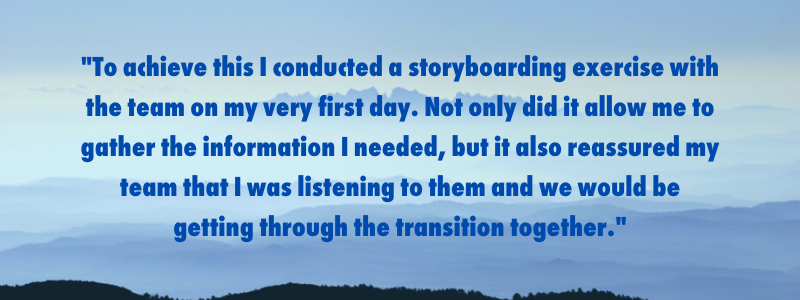
Today’s Morning Buzz is by Kayla Barber Perrota. Connect on LinkedIn.
A few months ago I found myself in a position I never expected. Over 24 hours our City Manager resigned, my boss resigned, and I found myself being asked to serve in an interim director position I neither wanted nor felt particularly prepared for. It was dizzying and terrifying, but ultimately a rewarding experience that allowed me to address cultural barriers for my team and gave me the reset I needed to feel once again invigorated and hopeful in my work. As many of us face pandemic turnover, a changing economy, and an increase in retirement I wanted to share a few of the lessons I learned during my interim tenure.
Build relationships– Change is difficult in general, but leadership changes come with an extra level of fear and anxiety. There are questions of what comes next, what direction you are now going in, and what other changes may be on the horizon. It is also a time when employee concerns that were hiding just below the surface are likely to bubble to the top, and when it isn’t uncommon for additional turnover to follow.
This is why as a transitional leader you must make building relationships with your team a top priority. You want to build trust in your leadership and open lines of communication early so you aren’t caught off guard by any potential issues.
You also want to reassure your team that while there will always be challenges with any transition, if they stick with it and work with you, they can help to drive a positive outcome.
For me, this was done through a series of 2x1s where I took employees from different areas of the department to lunch. I made sure this lunch was a safe space and no one was meeting with me at the same time as their manager or immediate coworker and made it clear that I wanted to use this time not only as an opportunity to learn more about them but for them to ask me questions as well. Topics included why they’d joined the team, what they were working on, pain points, and long-term goals. This was key in helping me to address concerns early and also identify win-win opportunities for the team as we tried to plug project gaps.
Identify your gaps early– I inherited a relatively new team, with many employees having less than three months under their belt. The few that had been there longer were highly specialized and while there had been attempts at cross-training few had panned out. I too had not been afforded the opportunity to learn much of the other areas in my department. I knew I needed to get a grasp on all the outstanding projects, day-to-day work, and gaps as quickly as possible so I could prioritize our response.
To achieve this I conducted a storyboarding exercise with the team on my very first day. Not only did it allow me to gather the information I needed, but it also reassured my team that I was listening to them and we would be getting through the transition together.
Employees were asked to write down all the projects they were working on or would need to be working on over the coming months and these were placed on the board for the whole room to see. Employees were then given green dots to signify items they felt confident in completing, and blue dots to signify what they “sort of” knew but would need help with. Once the board was dotted, it became clear that we had several items that either had no dots or only green “sort of” know dots. This helped me determine where cross-training needed to occur first and where we might need outside assistance. Combined with the information I got about long-term goals from my 2x1s I was able to work with managers to set up training plans that not only plugged gaps but got employees experience in areas they were interested in.
Be honest– Finally, it is great to come out quickly and gather feedback to hit the ground running, you need to make sure you are honest with your team about expectations. As a transitional leader, your time and authority may be limited, or some of the projects you want to do may not be realistic in the time you have available. It is important to be upfront with your team about any limitations so you can manage expectations, but not to dwell on what you can’t do.
Instead, look for low-hanging fruit that may be addressed quickly and with few barriers. This will give you some early wins to build momentum and trust in your team. For longer-term projects work with your team to come up with a plan for execution. Identify how you can begin moving them forward and how you would set up your successor to build on your progress. Try to make it as easy as possible to carry a project across the finish line.
